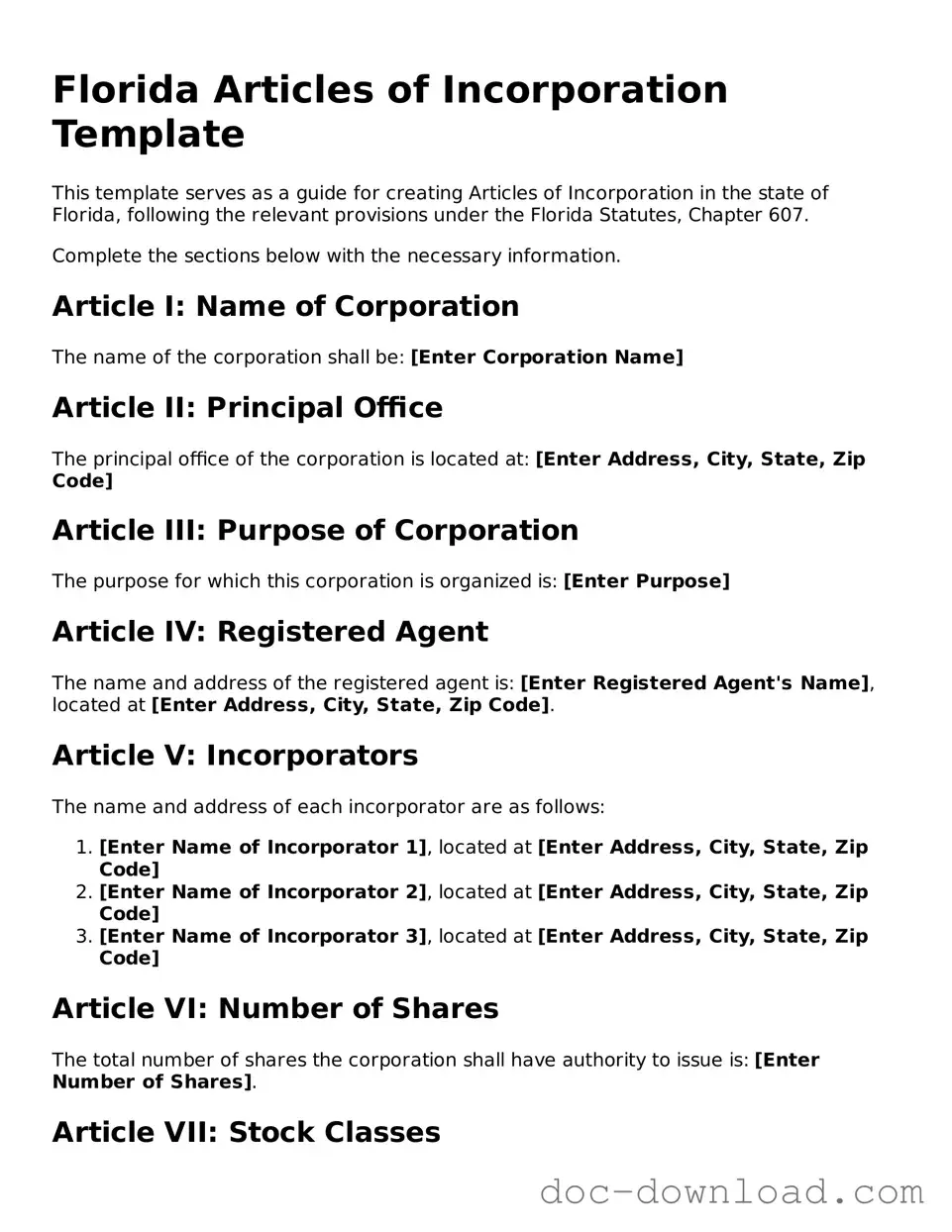The Articles of Incorporation form is akin to the Certificate of Formation used in various states, including Delaware and Texas. This document serves a similar purpose, establishing a corporation's existence under state law. Like the Articles of Incorporation, the Certificate of Formation outlines essential details such as the corporation's name, its purpose, and the registered agent. Both documents require filing with the state’s Secretary of State and are foundational for any business entity seeking to operate legally.
When considering the purchase of a boat, it is essential to have the proper documentation in place to validate the transaction. The Boat Bill of Sale form is a crucial document that not only records the sale details but also protects both the buyer and seller during the transfer of ownership, ensuring that all necessary information is accurately captured and verified.
Another document that shares similarities is the Bylaws of a corporation. While the Articles of Incorporation focus on the creation of the corporation, Bylaws provide the internal rules governing the management of the corporation. These rules cover how meetings are conducted, how directors are elected, and how decisions are made. Together, the Articles of Incorporation and Bylaws form a comprehensive framework for both the legal and operational aspects of a corporation.
The Operating Agreement, often used by Limited Liability Companies (LLCs), parallels the Articles of Incorporation in that it establishes the entity's structure and governance. This document details the roles of members, management procedures, and distribution of profits. Like the Articles, it is essential for defining the operational framework, but it is tailored to the unique needs of an LLC rather than a corporation.
The Partnership Agreement is another document that bears resemblance to the Articles of Incorporation. In partnerships, this agreement outlines the roles, responsibilities, and profit-sharing arrangements among partners. While the Articles create a corporation, the Partnership Agreement establishes a collaborative business framework among individuals, ensuring clarity in operations and minimizing disputes.
The Certificate of Good Standing is a document that, while different in purpose, is often associated with the Articles of Incorporation. This certificate verifies that a corporation is legally registered and compliant with state regulations. It is commonly required when a business seeks to operate in another state or when applying for loans. Both documents affirm a business's legitimacy, though they serve distinct functions in the lifecycle of a corporation.
The Statement of Information, required in some states, is similar to the Articles of Incorporation in that it provides vital information about a corporation to the state. This document typically includes details about the corporation's address, officers, and registered agent. While the Articles of Incorporation create the corporation, the Statement of Information ensures that the state has up-to-date information about its operations.
The Application for Employer Identification Number (EIN) is another document that is essential for corporations, akin to the Articles of Incorporation. While the Articles establish the corporation's existence, the EIN application is necessary for tax purposes. This number is used by the IRS to identify the business entity and is required for hiring employees, opening bank accounts, and filing taxes.
Incorporation filings in other states, such as the Articles of Organization in New York, serve a similar purpose to Florida’s Articles of Incorporation. These documents are the foundational filings that create a corporation in their respective states. They typically require similar information, including the business name, purpose, and registered agent, thus ensuring that the entity is recognized under state law.
The Shareholder Agreement is another document that complements the Articles of Incorporation. This agreement outlines the rights and responsibilities of shareholders, including how shares can be transferred and how decisions are made. While the Articles establish the corporation, the Shareholder Agreement provides clarity on the relationships among shareholders, promoting transparency and cooperation within the company.
Lastly, the Annual Report, which many states require corporations to file, relates closely to the Articles of Incorporation. This document updates the state on the corporation’s activities and confirms its ongoing compliance with state laws. While the Articles are a one-time filing that creates the entity, the Annual Report serves as a periodic reminder of the corporation's status and commitment to maintaining its legal standing.
